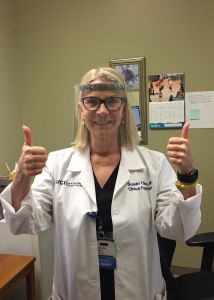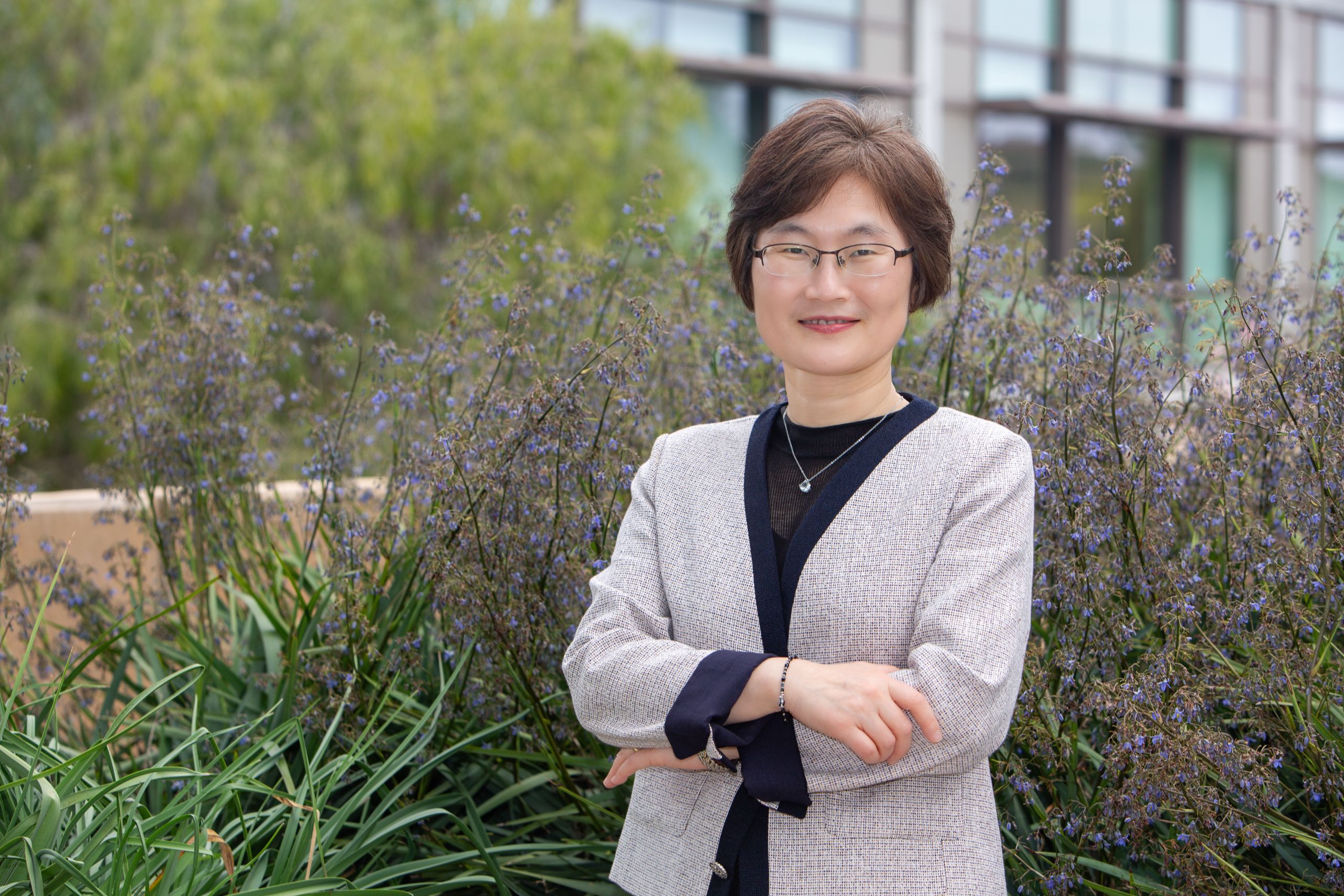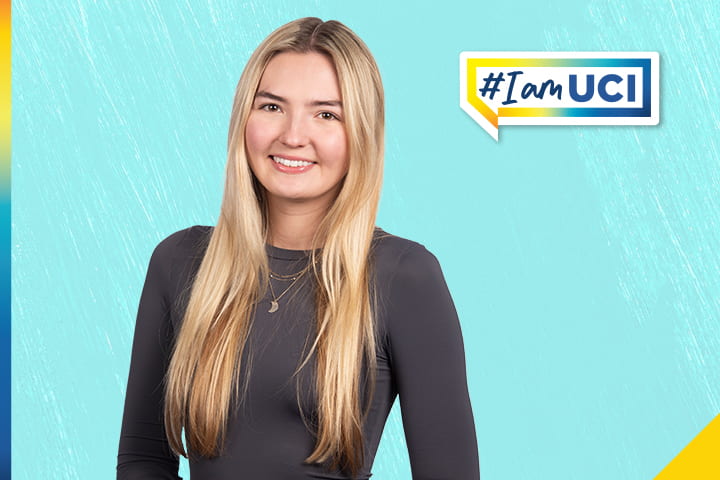
Susan Tiso, DNP, was the ‘human factor’ who tested UCI Beall Applied Innovation’s face shields for healthcare workers.
When the front line staff at UCI Medical Center needed more personal protective equipment, UCI’s brightest minds got together to solve the problem quickly to produce 5,000 3D-printed face shields.
It was with a big assist from two faculty from the UCI Sue & Bill Gross School of Nursing that helped take the shields from talk to reality in just 17 days.
It all began when assistant professor Sanghyuk Shin, PhD, heard about other institutions using 3D printers to produce face shields for healthcare workers.
The need hit him as an expert in infectious disease research.
“It’s one of the biggest failures of the response. There were months where we could have mobilized support and protection for healthcare providers as a country,” Shin says. “They are at the highest risk of getting infected.”
Connecting the pieces for 3D shields
When he saw the idea for 3D printed face shields online, he knew that the resources and capacity existed on the UCI campus.
“I emailed everyone I could think of,” Shin says.
Different groups were starting to talk about producing shields, but there was little coordination. Shin put all the right people in touch so they could move forward.
UCI Beall Applied Innovation, the Henry Samueli School of Engineering and the Claire Trevor School of the Arts took the original plans and got to work tweaking and improving them even further.
Nurse practitioner is ‘human factor’
Susan Tiso, DNP, a clinical professor in the School of Nursing, was brought in to be the “human factor.”
Her role was to evaluate the shields for their form, fit and function from the standpoint of a clinician.
Among the things she had to consider:
- Is the shield too tight or too loose?
- Does the shield fog?
- Is the shield easy to fasten by oneself?
- Does the shield hit the chest when looking down?
- Does the shield hit the wearer’s nose?
“If they don’t fit right, then you’re always touching it,” Tiso says. “That’s what you don’t want to do.”
On top of that, there are myriad Occupational Health and Safety Administration (OSHA) requirements to be met.
UCI Health infectious disease expert and nurse Linda Dickey weighed in to ensure the shields were in line with their standards on plastic thickness and coverage.
‘A sense of urgency’
From start to finish, the team moved fast.
Every day, Tiso would get a delivery of three to four shields to try on. Over a Zoom call with the engineers, she’d give her analysis of each one.
The engineers would make quick adjustments and send over a new batch of shields, often the same day. Often, says Tiso, she was on Zoom calls to evaluate the masks twice a day.
“There was a sense of urgency everyone could feel…because there was an urgency,” she says.
Shields inexpensive enough for single-use
Engineers eventually produced a shield that is more effective than the original model and cheap enough for single use.
Tiso says the ability to dispose of the shields was especially important, given that PPE is in high demand and short supply.
“With enough disposable face shields, healthcare workers would not need to decontaminate and reuse them,” she says.
All told, Tiso estimates she tried on about 20 of the shields.
Even with all that testing, unanticipated problems arose when they were used in different settings. Two big issues occurred when they were brought outdoors to the COVID-19 test sites.
“Wind would blow them right off and the glare was crazy,” she says. The engineers quickly fixed the glare issue, while adjustable bands kept the shields secure.
Trial on clinical staff at hospital
Once the initial design was created and approved, the shields still needed to be worn and evaluated by some of the clinical staff in the emergency room and operating rooms.
Each day, the trial team would fill out an evaluation form and a new shield would arrive the next day.
To this day, modifications and improvements to the face shields are still being made based on feedback.
“It was so interesting for me to work with a team like that, scientists who think in a very different way.”




Follow Us!